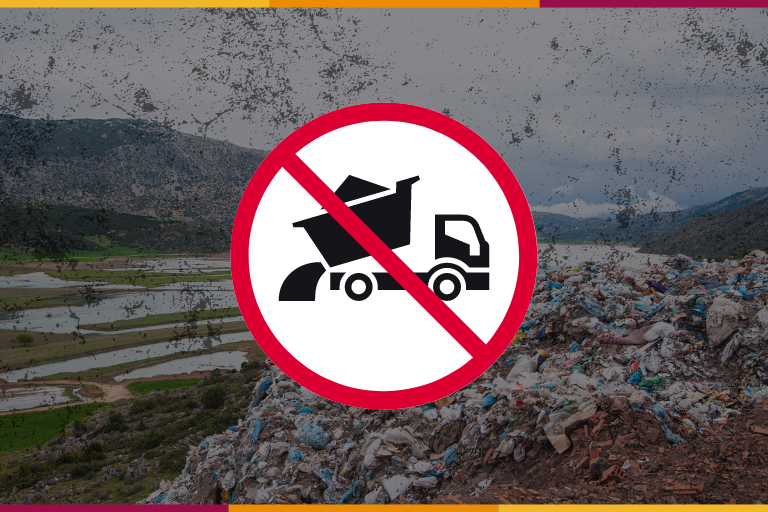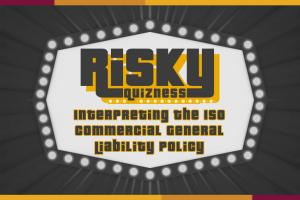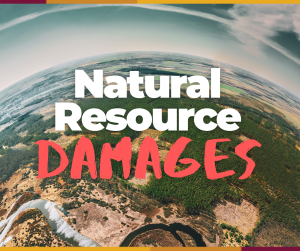
By Chris Bunbury, eS
Chris Bunbury is an Environmental Strategist and President of Environmental Strategist, Inc. (ESI), located in LeLand, Michigan. He graduated from Michigan State University with a Bachelor of Science degree in Natural Resources. In 1988, he worked in the commercial property and casualty insurance industry as a retail commercial insurance producer. As the environmental insurance industry evolved, it was a natural transition for Chris to move into this evolving field.
“Illegal disposal of waste,” often referred to by terms such as “illicit abandonment,” “midnight dumping,” or “fly-tipping,” represents a significant environmental and economic challenge. The US EPA estimates that each year 1.5 million tons of waste are disposed of unlawfully in the United States alone, leading to profound implications for communities, businesses, and the environment.
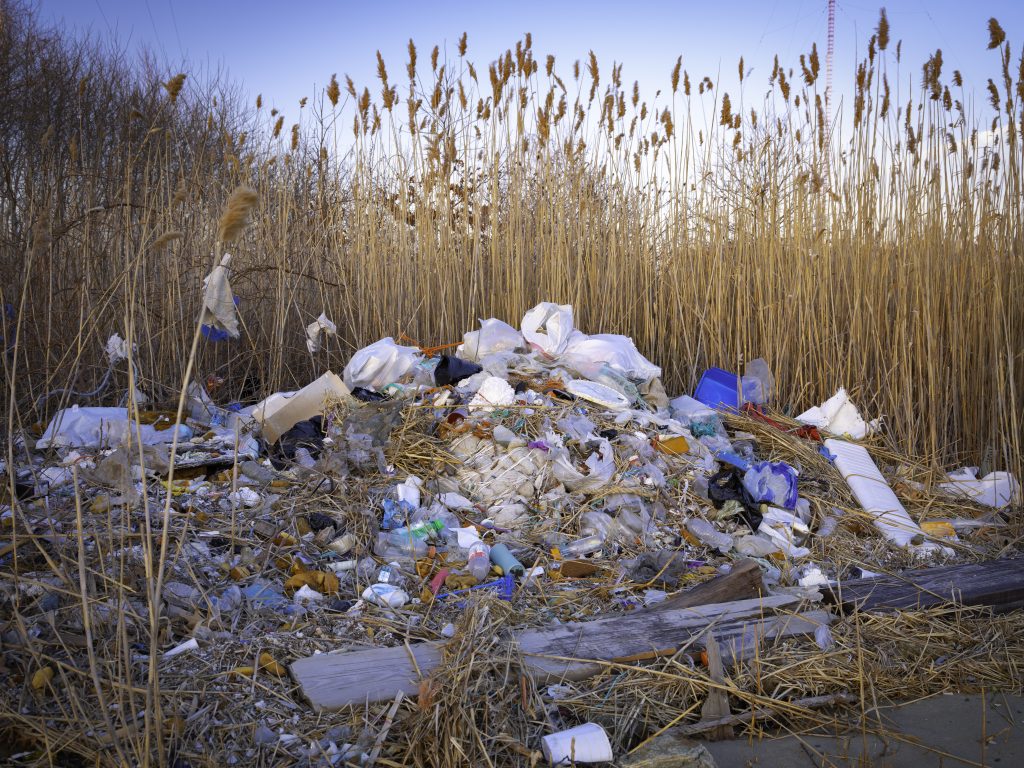
The illegal disposal of waste is not just a minor nuisance; it is a multi-billion-dollar industry with far-reaching consequences. Individuals and companies engage in this practice to avoid the costs associated with proper waste disposal.
Common locations for illegal dumping include:
- Dumpsters
- Vacant Land
- Abandoned Properties
- Rivers / Lakes
- Wooded Areas
- Sewer Systems and Outhouses
- Truck Washes
- Agricultural land
- Parks
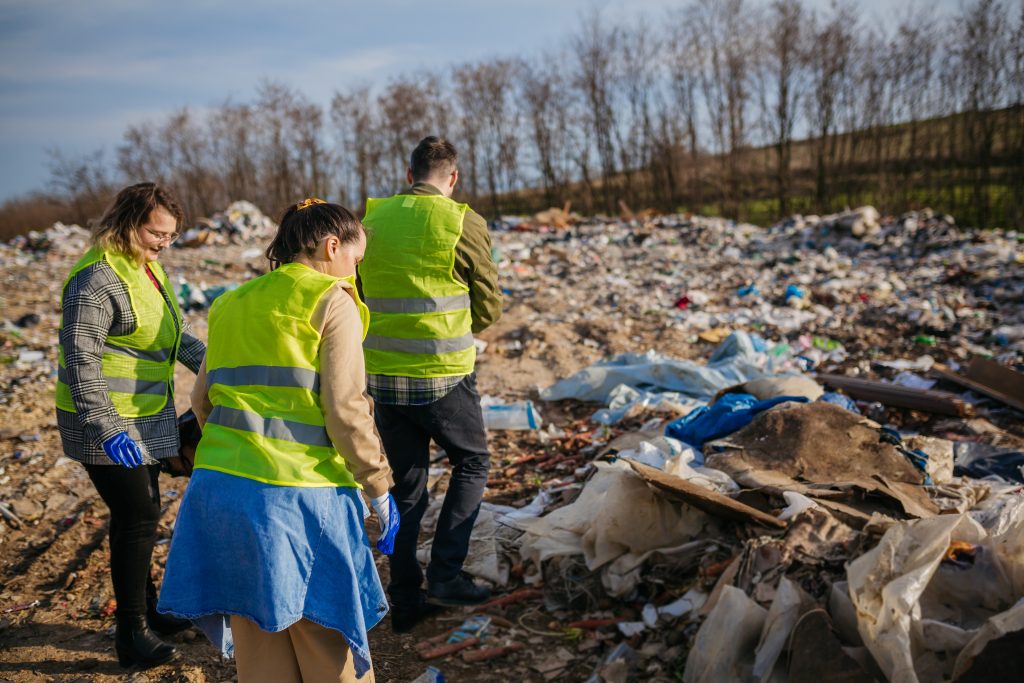
Environmental and Legal Responsibilities: One of the most critical aspects of illegal waste disposal is the legal responsibility placed on property owners. Under federal law, property owners are ultimately accountable for the environmental conditions of their land.
This means that even if waste is illegally dumped by another party, the property owner may be held liable for:
- Cleanup Costs: Significant financial burdens can arise from the need to clean contaminated land.
- Third-Party Bodily Injury: If someone suffers harm due to pollutants on your property, you could face lawsuits.
- Business Income Loss: If your property becomes contaminated, it may lead to loss of business income due to the inability to operate or an impacted third party such as a neighbor.
- Defense and Disposal Costs: Legal fees and costs associated with proper disposal of hazardous waste can accumulate rapidly.

Importance of Environmental Insurance
Given the potential liabilities, many businesses overlook the significance of including illegal waste disposal in their environmental financial assurance plans. Environmental insurance policies can provide coverage for “illicit abandonment,” protecting insured parties from damages arising from unauthorized dumping on their property or non-owned job sites.
Additionally, if illegally dumped waste from a neighboring property migrates onto your land / job site, this may also be covered under certain pollution policies. When conducting a Phase I Environmental Site Assessment, an evaluation of neighboring properties is performed, extending a minimum of two miles beyond the property boundary, to identify potential environmental risks from neighboring properties.
The illegal disposal of waste is a pervasive issue with significant implications for individuals and businesses alike.
Definition of “Illicit Abandonment” from an environmental insurance carrier. (Note: This is a sample and always refer to the actual policy for language)
Environmental insurance carrier Site Pollution Policy: “Illicit abandonment” means: 1. Solely with respect to coverage for “covered locations”, the intentional placement or abandonment of any solid, liquid, gaseous or thermal irritant, contaminant, or pollutant, including smoke, soot, vapors, fumes, acids, alkalis, chemicals, hazardous substances, hazardous materials, or waste materials, including “low-level radioactive waste”, “mixed waste” and medical, red bag, infectious and pathological wastes, on, at or into a “covered location”, by a person or entity that: a. Is not an “insured”; and b. Is not affiliated by common ownership with an “insured”, and, 2. Solely with respect to coverage for “transportation”, the intentional placement or abandonment of any waste, goods, materials or product beyond the boundaries of a “covered location” during “transportation” by a person or entity that: a. Is not an “insured”; and b. Is not affiliated by common ownership with an “insured”. “Illicit abandonment” does not mean any such placement or abandonment, above, which takes place, in whole or in part, prior to the inception date identified in Item 2. of the Declarations of this Policy.
Environmental insurance carrier Contractors policy: “Illicit abandonment” means the intentional placement or abandonment of any waste or materials beyond the boundaries of a “work site” or “non-owned disposal site” during “transportation” by a person or entity that: 1. Is not an “insured”; and 2. Is not affiliated by common ownership with an “insured”. “Illicit abandonment” does not mean any such placement or abandonment, above, which takes place, in whole or in part, prior to the inception date identified in Item 2. of the Declarations of this Policy.
Examples of illegal disposal of waste:
- https://www.cbsnews.com/sanfrancisco/news/tesla-1-5-m-settlement-improper-hazardous-waste-disposal/
- https://www.theguardian.com/business/2021/dec/20/walmart-waste-california-lawsuit-dumping
- https://www.justice.gov/usao-ndga/pr/north-georgia-business-owner-pleads-guilty-dumping-hazardous-waste
- https://www.clickondetroit.com/news/defenders/2021/01/13/chemical-company-accused-of-illegally-dumping-truckloads-of-waste-into-flint-water-system/
- https://spectrumlocalnews.com/nys/hudson-valley/news/2023/03/30/state-29-companies-sued-for-illegal-dumping-in-ulster-county
- https://www.newsfromthestates.com/article/state-reports-truck-washing-business-caught-red-handed-dumping-waste

Environmental Strategist’s (eS) coach property owners /businesses on the risks and responsibilities associated with illegal disposal of waste. Proactively addressing these concerns through environmental insurance and proper waste management practices can mitigate potential liabilities and protect both the environment, community health and your bottom line.
